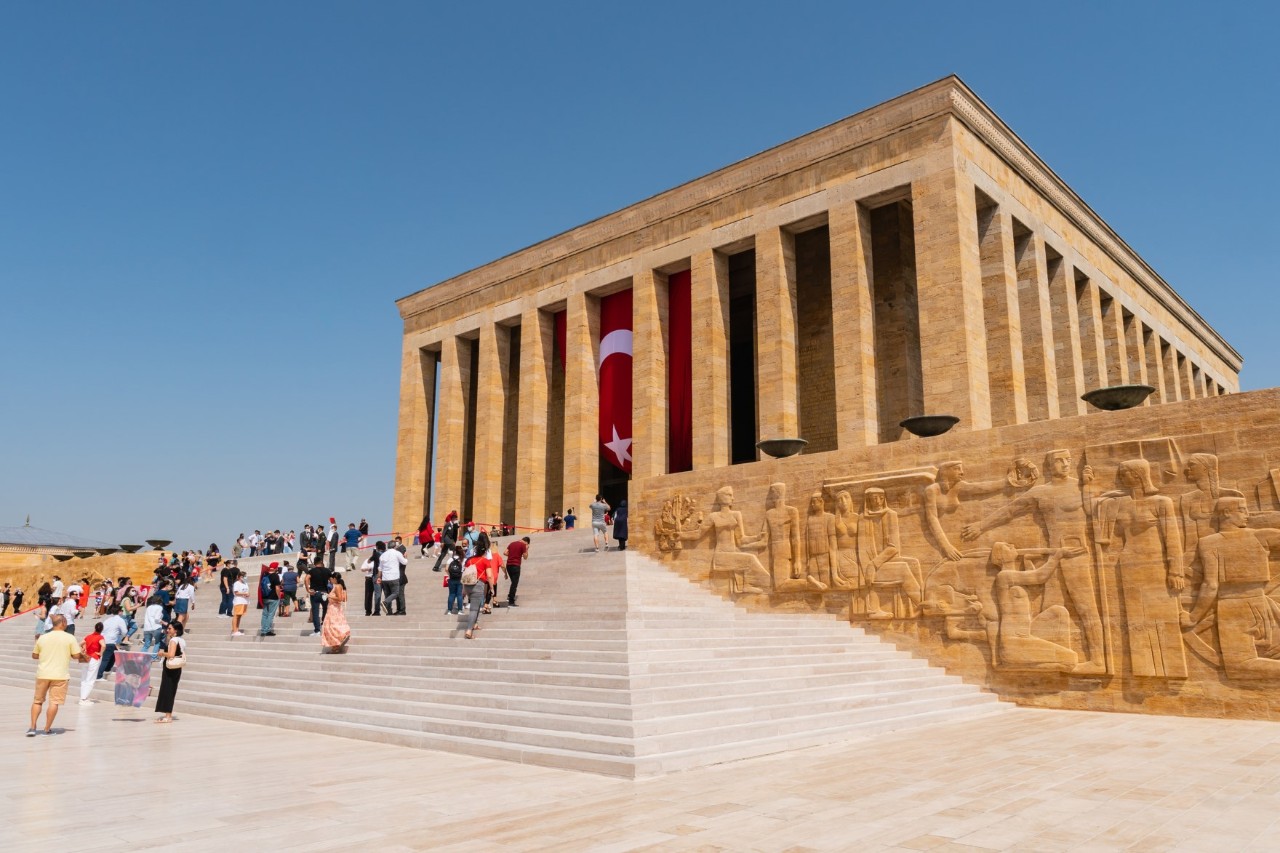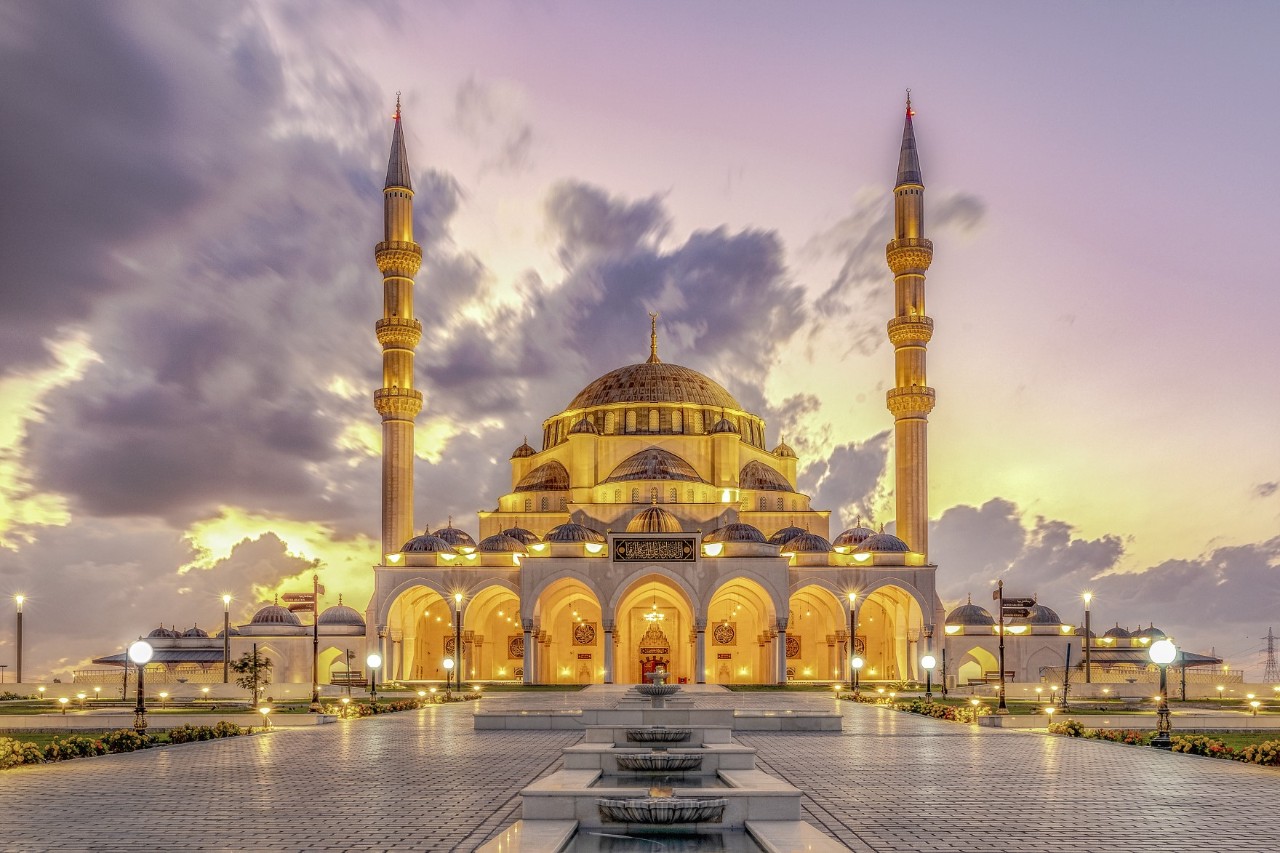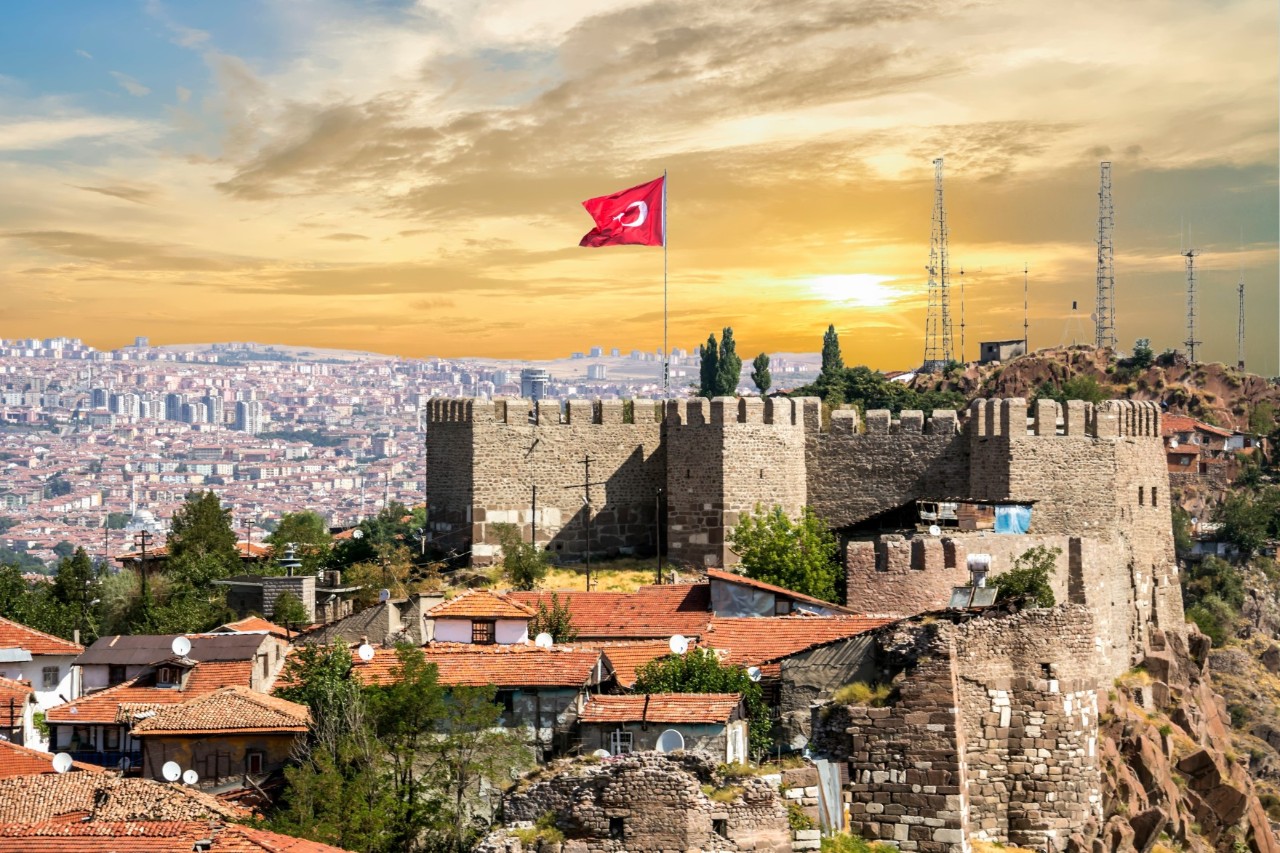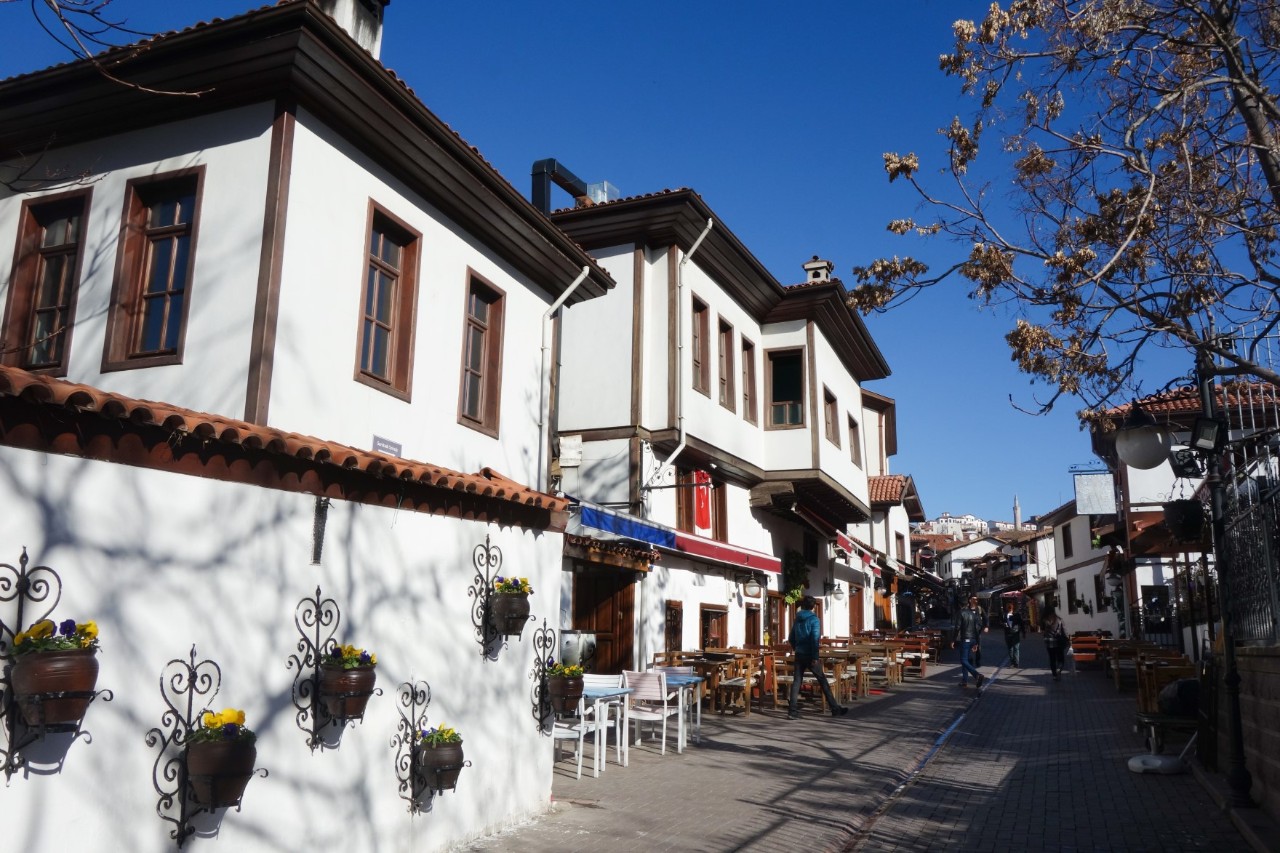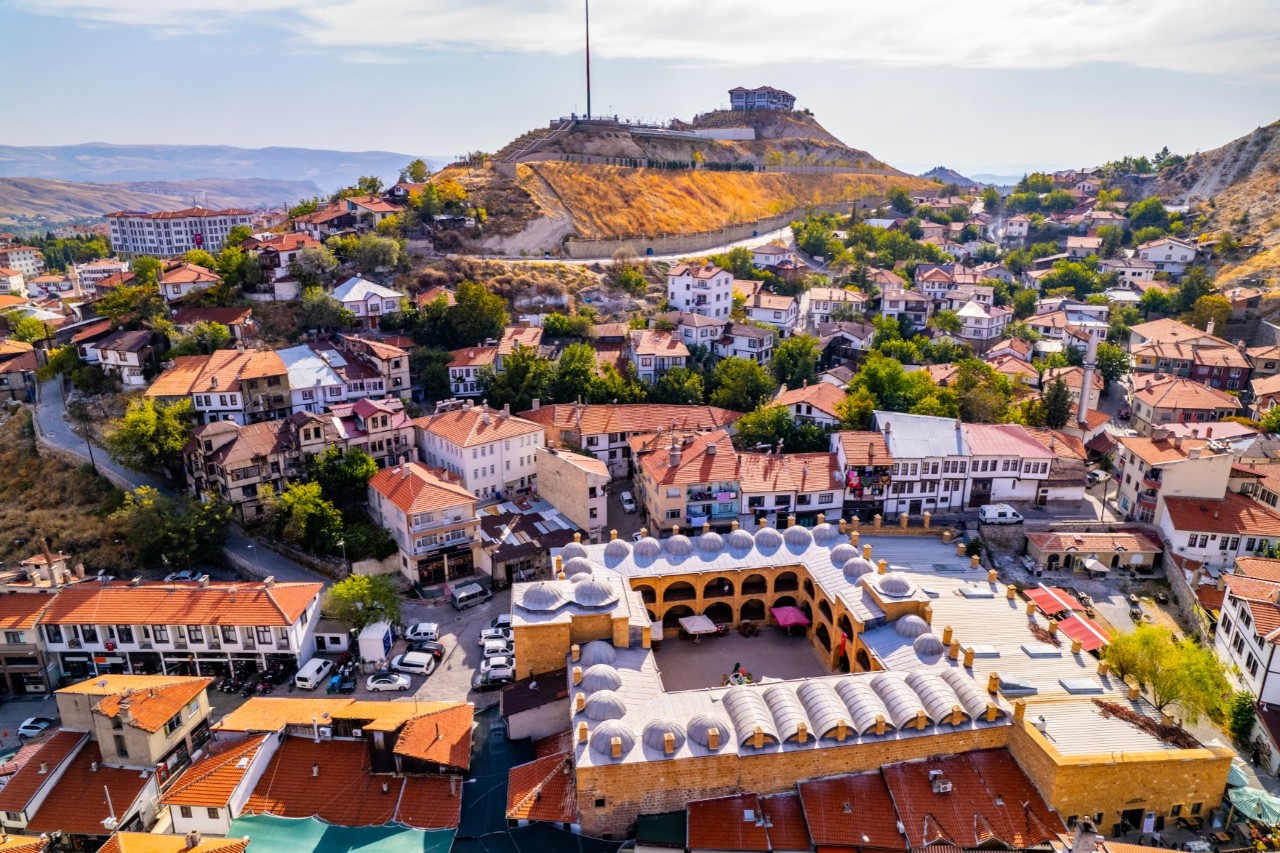In the heart of Anatolia
Ankara, the capital of Turkey, is located in the heart of the country. The country's second largest city has deep roots in the past, which can be discovered in the Museum of Anatolian Civilizations, around the ruins of the Temple of Augustus, and in the impressive Kocatepe Mosque. A visit to the imposing mausoleum of Ataturk, the founder of modern Turkey, should also be on the sightseeing program. A museum dedicated to the life and work of Ataturk is attached to it.
If you want to get a feel for the size and expanse of this metropolis of millions, you should visit the ancient fortress of Ankara Kalesi. The impressive castle not only offers a breathtaking view of the city but also insights into the history of Anatolia. The old town extends around the fortress, where traditional markets and shops sell local handicrafts. If you want to try authentic Turkish dishes such as kebab, kofta and iskender, this is the place for you.
Numbers, data, facts
- Time difference: + one hour
- Population: 5.1 million
- Official language: Turkish
- Currency: Turkish Lira (TRY)
City tour with five stops
Ankara – Gateway to the Central Anatolian Plateau
Ankara is located in the heart of Central Anatolia, a region of great natural beauty. The extensive area is characterized by the Anatolian Plateau, which boasts rolling hills, green valleys and high mountain ranges. The fairytale landscape of Cappadocia, known for its unique rock formations and bizarre tufa cones, offers a backdrop that seems to come from another world. The region is also home to Lake Tuz, the second largest salt lake in the world, known for its high salt content and sparkling surface.
The history of the region goes back to ancient times. Central Anatolia was once home to various civilizations, including the Hittites and the Romans. The ruins of the ancient city of Hattusa, a UNESCO World Heritage Site, are an impressive testament to this advanced civilization. Traditional Ottoman villages such as Beypazarı, near Ankara, are a particularly good place to immerse yourself in the local culture and cuisine.
The fairytale world of Central Anatolia
Ankara from BER
- Airlines to Ankara
- Airport from BER
Five travel tips for...
- Zoo, open-air museum and farm in Atatürk Forest
- Long walks in Seğmenler Park
- Swans, ponds and gardens in Kuğulu Park
- Carousels, theatre and fountains in Gençlik Parkı
- Ponds, pavilions and playgrounds in Altınpark
- Ataturk's Mausoleum and Museum: the founding and history of Turkey
- Museum of Anatolian Civilizations: insight into ancient civilizations
- Ethnographic Museum: Turkish folk culture and tradition
- Rahmi M. Koç Museum: technology museum with historic vehicles
- CerModern: art and culture center in an old locomotive hall
- Çıkrıkçılar Yokuşu: An antiques bazaar selling jewelry and carpets
- Ulus Farmers' Market: Ideal for dried fruit, spices and a wide selection of fresh olives
- Maltepe Pazarı: A diverse weekly market known for its low prices and wide variety
- Bakırcılar Çarşısı: Handmade copper goods can be found at this traditional market
- Samanpazarı: Historic neighborhood with many small shops, perfect for unique souvenirs
Picture Source title:
© Koraysa/stock.adobe.com
The information published on this page is current as of the date of publication or update.


